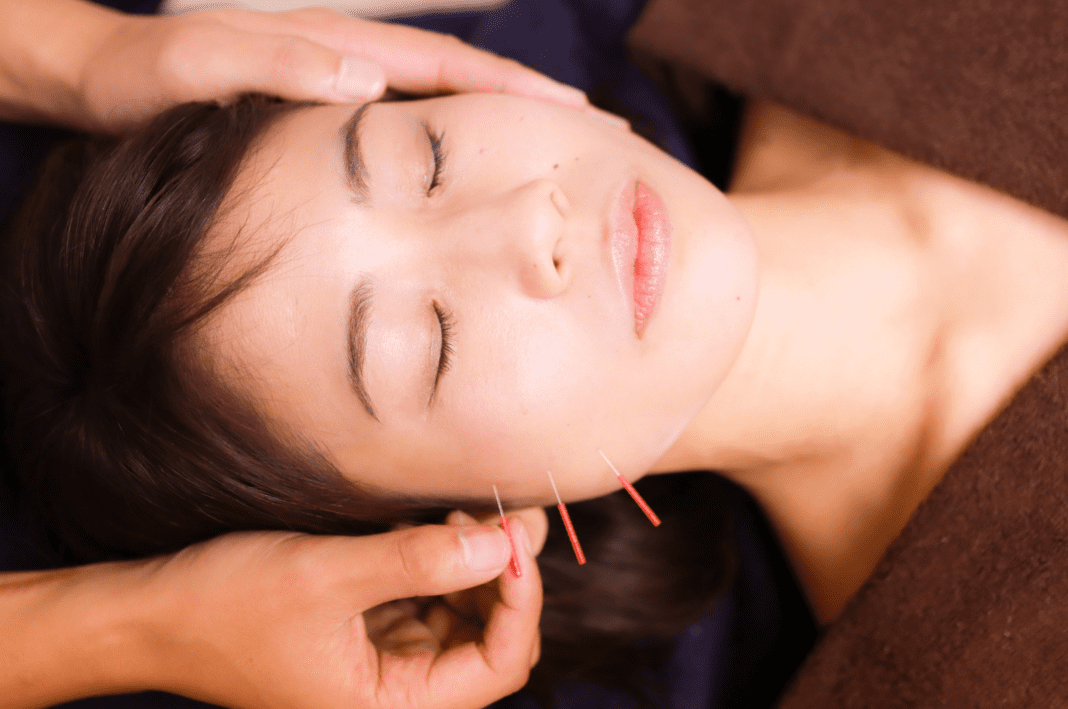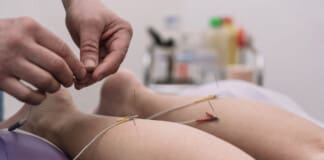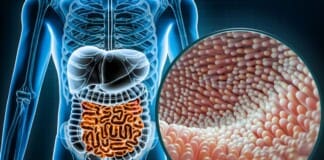Can individuals with jaw pain find relief in acupuncture therapy to reduce pain and improve jaw mobility in the upper body portions?
Table of Contents
Introduction
The head is part of the upper musculoskeletal body quadrant supported by the neck area, which consists of the skull, various muscles, and vital organs that provide stability, mobility, and functionality. Around the head, the different facial features include the mouth, nose, eyes, and jaw to allow the host to eat, speak, smell, and see. While the head provides sensory and motor function, the neck includes motor stability to ensure no injuries or trauma affect the head. Located below the eyes is the jaw, which allows motor function with various muscles and joints to hyperextend without pain or discomfort. However, multiple factors can affect the jaw muscles and joints to invoke pain and discomfort, which can cause radiating referred pain down to the neck muscles. Today’s article looks at how jaw pain can affect the upper body, how non-surgical treatments can help with jaw pain, and how treatments like acupuncture can help restore jaw mobility. We talk with certified medical providers who consolidate our patients’ information to provide treatments to reduce jaw pain affecting their jaw and neck area. We also inform and guide patients on how acupuncture and non-surgical treatments can benefit many individuals with pain correlating with the jaw. We encourage our patients to ask their associated medical providers intricate and important questions about how their pain affects their quality of life and reduces jaw pain. Dr. Jimenez, D.C., includes this information as an academic service. Disclaimer.
Jaw Pain Affecting The Upper Body
Do you feel muscle soreness in your jaw and neck muscles throughout the day? Have you constantly rubbed or massaged your jaw muscles to reduce tension? Or have you been dealing with headaches or neck pain continually that affects your daily routine? Many individuals experiencing these pain-like symptoms are dealing with jaw pain or TMJ (temporomandibular joint syndrome). The jaw consists of mastication muscles on each side that help provide various functions like chewing, swallowing, or talking. When multiple traumatic or ordinary factors start to affect the jaw, it can disrupt the sensory-motor function of the upper body. For individuals, jaw pain is common worldwide, and with TMJ, it can become an issue as the pain seems to affect the jaw’s motor control while being accompanied by restricted mouth opening and impaired max bite force. (Al Sayegh et al., 2019) Additionally, TMJ affects not only the mastication muscles but also the temporomandibular joint, the joint that connects the jaw to the skull, which becomes inflamed and causes more issues.

So, how would TMJ affect the upper body? Well, when TMJ affects the mastication muscles and the temporomandibular joint, many individuals will experience various symptoms like:
- Difficulty moving mouth when chewing
- Popping/cracking sensation when opening or closing the jaw
- Headaches/Migraines
- Ear pain
- Tooth pain
- Neck and shoulder pain
This causes myofascial and intraarticular disorders that affect the muscles and joints of the jaw, which are linked to the skull. (Maini & Dua, 2024) To that point, many individuals will be experiencing referred pain, thinking they are dealing with a toothache when it is due to trigger points in the mastication muscles. This is when TMJ is accompanied by muscle-joint pain in the neck or upper back or if teeth issues accompany TMJ, but it depends on the individual and situation they are under. However, numerous treatments can reduce jaw pain and its associated symptoms that affect the jaw and the neck.
The Non-Surgical Approach To Wellness- Video

Non-Surgical Treatments For Jaw Pain
When reducing jaw pain, many individuals seek treatment to minimize the pain-like effects and regain mobility back to their jaws. It can be challenging and complex when people are dealing with jaw pain. It is a multifactorial issue that can affect the neck and back areas. So, when people speak with their primary doctors about their jaw pain, they will get an evaluation of where their pain is located and if they have any complaints correlating with the jaw pain. Afterward, many doctors will refer to musculoskeletal specialists to relieve the jaws’ pain. Treatments and techniques used by chiropractors, massage therapists, and physiotherapists can help ease the inflamed and tense mastication muscles. Techniques like soft tissue mobilization can help relax the masticatory muscles by lengthening them to the extent of releasing the trigger points in the muscles. (Kuc et al., 2020) At the same time, physiotherapy can help the jaw muscle through various relaxing techniques to increase the range of motion while strengthening the jaw to reduce pain and stress. (Byra et al., 2020) Many of these treatments are non-surgical, which means they are non-invasive and effective for the person’s pain while affordable.
Acupuncture To Restore Jaw Mobility

When it comes to non-surgical treatments, one of the oldest forms is acupuncture, which can help reduce the pain-like effects of jaw pain and restore mobility. Acupuncture originates from China, and highly trained medical professionals use thin, solid needles to be placed in acupoints on the body to disrupt the pain signal and provide relief. For jaw pain, acupuncturists will put needles on the acupoints of the jaw or the surrounding muscles to reduce mechanical hypersensitivity of the nerve cells that are causing pain while improving the sensory-motor function with a positive response. (Teja & Nareswari, 2021) Additionally, when dealing with ear pain associated with TMJ affecting the neck muscles, acupuncture can help enhance the neck’s range of motion by placing the needles on the trigger points of the cervical muscles. (Sajadi et al., 2019) When acupuncture treatment helps many individuals with jaw pain affecting their necks and heads, they can provide beneficial, positive results through consecutive treatment and improve jaw mobility function.
References
Al Sayegh, S., Borgwardt, A., Svensson, K. G., Kumar, A., Grigoriadis, A., & Christidis, N. (2019). Effects of Chronic and Experimental Acute Masseter Pain on Precision Biting Behavior in Humans. Front Physiol, 10, 1369. https://doi.org/10.3389/fphys.2019.01369
Byra, J., Kulesa-Mrowiecka, M., & Pihut, M. (2020). Physiotherapy in hypomobility of temporomandibular joints. Folia Med Cracov, 60(2), 123-134. https://www.ncbi.nlm.nih.gov/pubmed/33252600
Kuc, J., Szarejko, K. D., & Golebiewska, M. (2020). Evaluation of Soft Tissue Mobilization in Patients with Temporomandibular Disorder-Myofascial Pain with Referral. Int J Environ Res Public Health, 17(24). https://doi.org/10.3390/ijerph17249576
Maini, K., & Dua, A. (2024). Temporomandibular Syndrome. In StatPearls. https://www.ncbi.nlm.nih.gov/pubmed/31869076
Sajadi, S., Forogh, B., & ZoghAli, M. (2019). Cervical Trigger Point Acupuncture for Treatment of Somatic Tinnitus. J Acupunct Meridian Stud, 12(6), 197-200. https://doi.org/10.1016/j.jams.2019.07.004
Teja, Y., & Nareswari, I. (2021). Acupuncture Therapies for Addressing Post Odontectomy Neuropathy. Med Acupunct, 33(5), 358-363. https://doi.org/10.1089/acu.2020.1472
Disclaimer
Professional Scope of Practice *
The information herein on "Tackling Jaw Pain Using Acupuncture" is not intended to replace a one-on-one relationship with a qualified health care professional or licensed physician and is not medical advice. We encourage you to make healthcare decisions based on your research and partnership with a qualified healthcare professional.
Blog Information & Scope Discussions
Welcome to El Paso's Premier Wellness and Injury Care Clinic & Wellness Blog, where Dr. Alex Jimenez, DC, FNP-C, a Multi-State board-certified Family Practice Nurse Practitioner (FNP-BC) and Chiropractor (DC), presents insights on how our multidisciplinary team is dedicated to holistic healing and personalized care. Our practice aligns with evidence-based treatment protocols inspired by integrative medicine principles, similar to those found on this site and our family practice-based chiromed.com site, focusing on restoring health naturally for patients of all ages.
Our areas of multidisciplinary practice include Wellness & Nutrition, Chronic Pain, Personal Injury, Auto Accident Care, Work Injuries, Back Injury, Low Back Pain, Neck Pain, Migraine Headaches, Sports Injuries, Severe Sciatica, Scoliosis, Complex Herniated Discs, Fibromyalgia, Chronic Pain, Complex Injuries, Stress Management, Functional Medicine Treatments, and in-scope care protocols.
Our information scope is multidisciplinary, focusing on musculoskeletal and physical medicine, wellness, contributing etiological viscerosomatic disturbances within clinical presentations, associated somato-visceral reflex clinical dynamics, subluxation complexes, sensitive health issues, and functional medicine articles, topics, and discussions.
We provide and present clinical collaboration with specialists from various disciplines. Each specialist is governed by their professional scope of practice and their jurisdiction of licensure. We use functional health & wellness protocols to treat and support care for musculoskeletal injuries or disorders.
Our videos, posts, topics, and insights address clinical matters and issues that are directly or indirectly related to our clinical scope of practice.
Our office has made a reasonable effort to provide supportive citations and has identified relevant research studies that support our posts. We provide copies of supporting research studies upon request to regulatory boards and the public.
We understand that we cover matters that require an additional explanation of how they may assist in a particular care plan or treatment protocol; therefore, to discuss the subject matter above further, please feel free to ask Dr. Alex Jimenez, DC, APRN, FNP-BC, or contact us at 915-850-0900.
We are here to help you and your family.
Blessings
Dr. Alex Jimenez DC, MSACP, APRN, FNP-BC*, CCST, IFMCP, CFMP, ATN
email: coach@elpasofunctionalmedicine.com
Multidisciplinary Licensing & Board Certifications:
Licensed as a Doctor of Chiropractic (DC) in Texas & New Mexico*
Texas DC License #: TX5807, Verified: TX5807
New Mexico DC License #: NM-DC2182, Verified: NM-DC2182
Licensed as a Multi-State Advanced Practice Registered Nurse (APRN*) in Texas & Multistate
Multistate Compact RN License by Endorsement (42 States)
Texas APRN License #: 1191402, Verified: 1191402 *
Florida APRN License #: 11043890, Verified: APRN11043890 *
* Prescriptive Authority Authorized
ANCC FNP-BC: Board Certified Nurse Practitioner*
Compact Status: Multi-State License: Authorized to Practice in 40 States*
Graduate with Honors: ICHS: MSN-FNP (Family Nurse Practitioner Program)
Degree Granted. Master's in Family Practice MSN Diploma (Cum Laude)
Dr. Alex Jimenez, DC, APRN, FNP-BC*, CFMP, IFMCP, ATN, CCST
My Digital Business Card
RN: Registered Nurse
APRNP: Advanced Practice Registered Nurse
FNP: Family Practice Specialization
DC: Doctor of Chiropractic
CFMP: Certified Functional Medicine Provider
IFMCP: Institute of Functional Medicine
CCST: Certified Chiropractic Spinal Trauma
ATN: Advanced Translational Neutrogenomics














